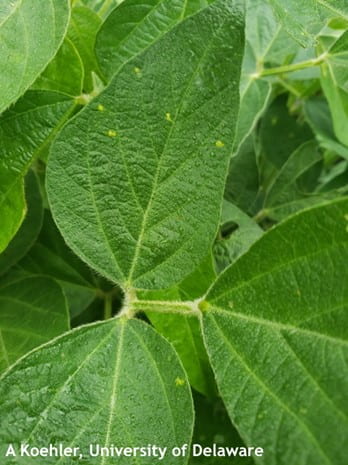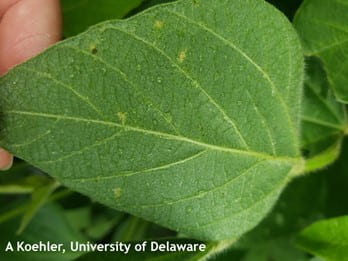Alyssa Koehler, Extension Field Crops Pathologist; akoehler@udel.edu
Field Corn
Grey leaf spot (GLS) has remained the primary disease showing up in corn. If GLS lesions are becoming widespread in corn that is already past R3, yield potential should not be significantly influenced. If you have late planted corn that is at VT/R1 and over 50% of plants have lesions on the second leaf below the ear leaf or higher, a fungicide may be considered, depending on the expected yield potential of the field.
Soybean
Despite being dry across much of the area, I have seen some downy mildew in irrigated soybeans following the cloudy weather of the past few days. Downy mildew is favored by cool, wet weather and appears as pale-green to light yellow spots that can turn brown to dark brown as they mature (Figure 1). If you flip the leaf over, the underside is covered with tufts of pale to grey fungal growth (Figure 2). Under the microscope, these tufts are visible as branched sporangiophores with spores called sporangia (Figure 3). This disease does not typically influence yield. Continue to monitor the weather and scout for foliar diseases like frogeye leaf spot through R6 if you are considering a fungicide application. If disease pressure is low or plants are beyond R5, a fungicide application may not be economical.



